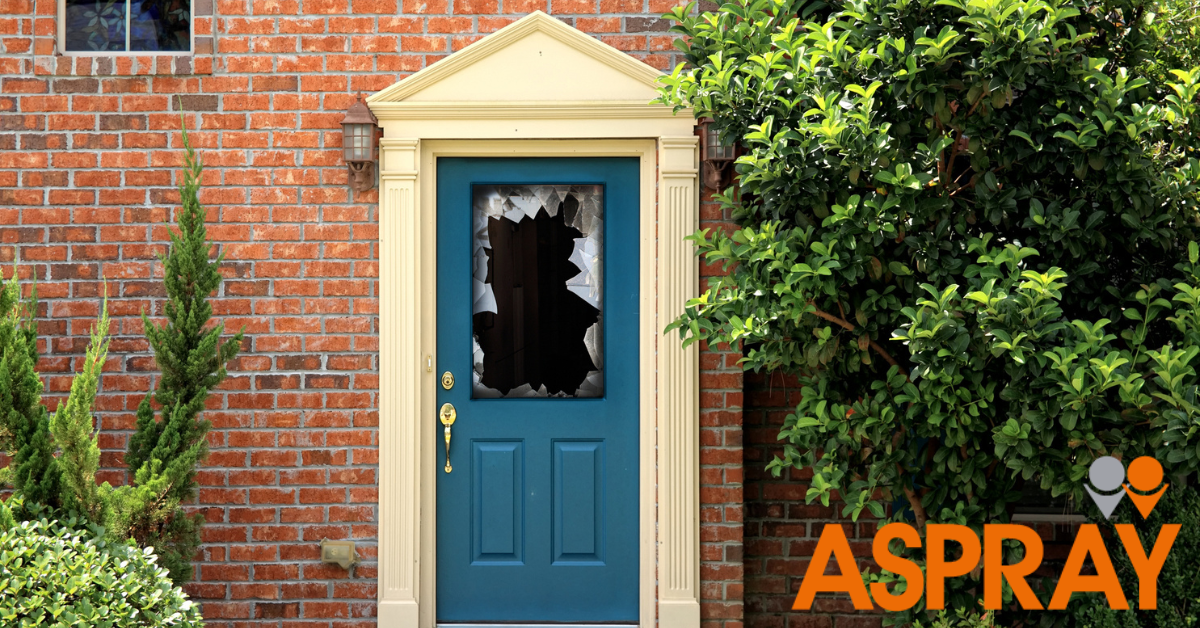

Malicious damage by tenants: What landlords need to know
As a landlord, you expect the occasional scuffed skirting board or a picture hook left in the wall—but what about smashed windows, ripped-out fittings, or a flooded bathroom caused by a blocked sink… on purpose?
Malicious damage by tenants is every landlord’s nightmare, turning what should be a simple handover into a costly repair job. While most tenants treat rental properties with care, it only takes one bad experience to highlight the importance of proper safeguards. So, what exactly counts as malicious damage, and how can landlords protect themselves from financial fallout?
What is malicious damage by tenants?
The insurance definition of malicious damage by tenants typically refers to intentional damage caused to a rental property by tenants, their guests, or anyone lawfully on the premises, with the intent to cause harm or destruction.
Not to get mixed up with accidental damage, which refers to unintentional incidents, ie. Spilling wine on the carpet or a child accidentally kicking a football through the window. Malicious damage by tenants may include acts such as:
- Breaking windows, doors or fixtures
- Graffiti or vandalism
- Pouring substances down drains to cause blockages
- Smashing appliances or damaging walls
- Flooding or fire damage caused intentionally.
Is malicious damage covered by landlord insurance?
Landlord insurance does not always contain coverage for malicious damages by tenants as standard. Instead, some insurers offer this as an additional add-on to your policy. It's essential to review your policy details or consult with your insurance provider or broker to understand if this coverage is included or needs to be added separately.
Putting this cover in place may come with additional conditions which will need to be met should you need to make a claim on the policy. These conditions may include ensuing tenant referencing and background checks where completed, keeping a details inventory of the property condition and making regular inspections.
Although malicious damage is available as an add-on, the cover level is generally between £5k-£10k which is unlikely to cover the cost of repairs should a tenant cause severe damage to your property. e.g. they use the property for the cultivation of drugs and in some instances, this is also excluded under malicious damage.
How to reduce the risk caused by malicious damage
Reducing the risk of malicious damage starts long before a tenant moves in. A thorough screening process is your first line of defence—checking references, employment history, and credit reports can help filter out high-risk tenants.
Once a tenant is in place, a detailed inventory and condition report is essential. Documenting the state of the property with photos and written records before move-in ensures there’s no dispute over damages later.
Throughout the tenancy, regular property inspections (with proper notice) allow landlords to identify potential problems early, deter neglect, and maintain a visible presence.
Finally, a clear and well-structured tenancy agreement sets expectations from day one, outlining tenant responsibilities and consequences for damage. It's essential that you check that the terms and conditions of your lease/tenancy agreement align with the terms and conditions in your policy documents.
Together, these steps create a proactive approach that reduces risk and works towards protecting your investment.
What to do if a tenant has caused malicious damage?
Discovering malicious damage in your rental property can be frustrating but acting swiftly and methodically can help minimise the fallout. Start by assessing the damage, taking clear photos, gathering evidence, and seeking a professional assessment if needed. If the damage is severe—such as smashed windows, arson, or vandalism—you may need to report the incident to the police, especially if it qualifies as criminal damage.
Next, review your insurance policy to check if malicious damage is covered and begin the claims process promptly. If repairs are necessary, you may be able to deduct costs from the tenant’s deposit, but it’s essential to follow the correct legal procedures to avoid disputes.
In extreme cases, where damage is extensive, and costs exceed the deposit, legal action or eviction may be necessary to recover losses. Staying calm, gathering the right evidence, and following the correct steps can help landlords handle these situations efficiently.
Final thoughts
Malicious damage by tenants is a risk no landlord wants to face, but being proactive can make all the difference. Thorough tenant screening, clear agreements, and regular inspections help reduce risk, while the right insurance cover provides financial protection if the worst happens. If damage does occur, acting quickly—gathering evidence, checking your policy, and following legal procedures—can help minimise losses. With the right precautions in place, landlords can better protect their properties and investments.

